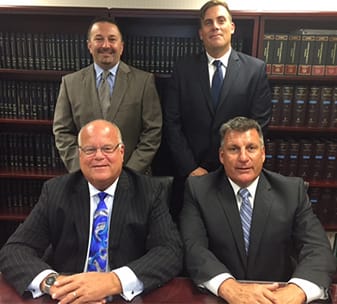New York foreclosure rates up 3 percent since 2012, bankruptcy can help
New York foreclosure rates up 3 percent since 2012, bankruptcy can help
Foreclosure rates in 2013 are up three percent in New York compared to this time in 2012. Although the entire state is experiencing high foreclosure rates, Rockland, Putnam, Wayne, Nassau and Montgomery counties were listed as the five with the highest rates. The findings were reported by RealtyTrac, the leading online marketplace for foreclosed properties.
Those facing foreclosure have options to help avoid losing their homes. In some cases, the bank or lender is willing to negotiate. A new payment plan or possibly an opportunity to refinance the home may be available. Unfortunately, this is not always the case. If the lender is not willing to negotiate and you fear losing your home, a bankruptcy petition may provide an opportunity to keep your property safe from foreclosure.
How bankruptcy can help
In order to understand the role bankruptcy can play in these situations, it helps to have a basic understanding of the bankruptcy process. Individuals filing for either a Chapter 7 or Chapter 13 bankruptcy receive what is called an automatic stay. This court order requires that all creditors, often including mortgage lenders, refrain from attempting to receive payment from the petitioner.
This also applies to any pending foreclosures. The pending foreclosure must be put on hold until the bankruptcy process is finalized. It is important to note that lenders can, in some cases, find a loophole. A lender could file a motion with the court to lift the stay. This paperwork requests the court allow the lender to continue with the foreclosure process. Even if this is approved, the bankruptcy process still postpones the foreclosure.
The difference between a Chapter 7 and Chapter 13 petition
Essentially, a Chapter 7 petition allows the petitioner to discharge certain debts. Once discharged, the petitioner is no longer obligated to pay these debts. A Chapter 13 plan allows the petitioner to structure a court supervised repayment plan, generally lasting three to five years.
Each chapter impacts a potential foreclosure differently. If a Chapter 13 is used all payments are included in the repayment plan. The term arrearage is used to refer to the past due payments included in the restructured payment plan. In contrast, a Chapter 7 can lead to forgiveness of the mortgage debt. Because the debt is forgiven, it can make keeping the home more difficult. This is because the home is generally held by the lender as a form of collateral for the loan. A Chapter 7 bankruptcy does not forgive the lien held by the bank, which could allow the bank to move forward with foreclosure.
What this means for homeowners facing foreclosure
If done correctly, a bankruptcy petition can serve as a way to save a home from foreclosure. In order to increase your odds of success, it is important to contact an experienced foreclosure defense attorney. This professional will go through all your legal options, including bankruptcy, and help you to make the decision that is best for your unique situation.

